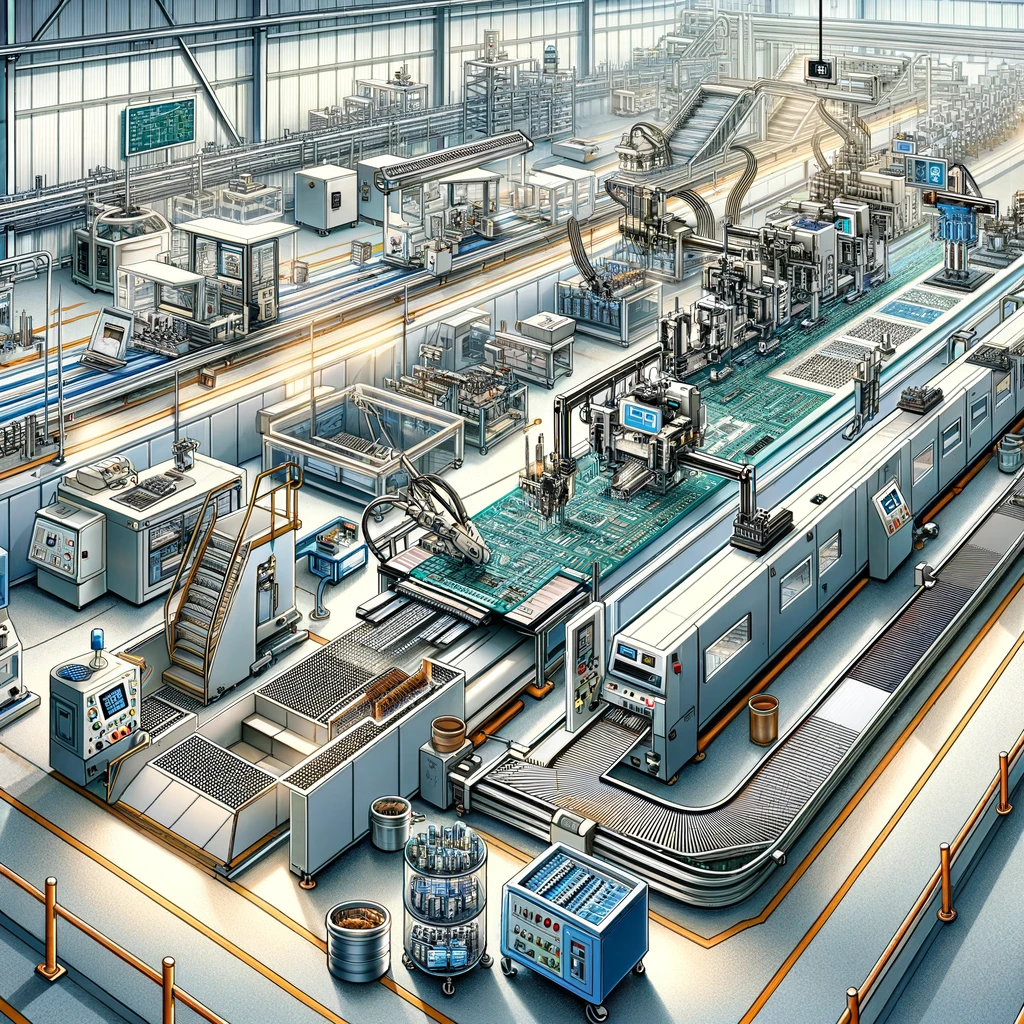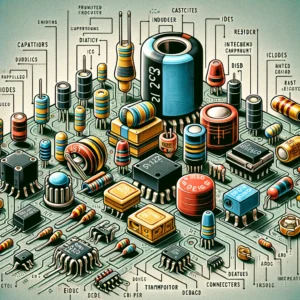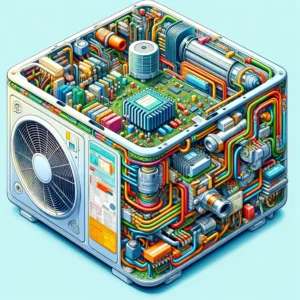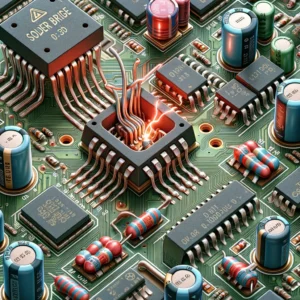What Is an SMT Line? An Ultimate Guide
Surface Mount Technology (SMT) has transformed the electronics manufacturing industry by enabling the mass production of high-quality, compact devices. At the heart of this revolution lies the SMT line, a sophisticated assembly setup designed to accurately place and solder electronic components onto the surface of printed circuit boards (PCBs).
This guide offers a comprehensive look into what an SMT line is, its key components, the process flow, and the benefits it brings to electronics manufacturing.
What Is an SMT Line?

An SMT line refers to a series of interconnected machines and equipment used in the assembly of electronic components onto PCBs using surface mount technology.
Unlike traditional through-hole technology, which involves inserting component leads into holes drilled in the PCB, SMT mounts components directly onto the surface of the board, allowing for more components to be placed on both sides of the board, thereby reducing size and improving performance.
Components of an SMT Line
The typical SMT line comprises several key pieces of equipment, each playing a crucial role in the assembly process:
- Loader: Feeds PCBs into the line.
- Stencil Printer: Applies solder paste to the PCBs using a stencil, ensuring that paste is deposited only where components will be placed.
- Pick and Place Machines: Robotically picks up components from feeders or trays and accurately places them on the solder-pasted PCBs.
- Reflow Oven: Melts the solder paste, thereby soldering the components to the PCB.
- Cooler: Cools down the soldered PCBs to solidify the solder joints.
- Unloader: Removes the PCBs from the line for further inspection or additional processing.
The SMT Assembly Process
The process of assembling a PCB in an SMT line involves several steps, streamlined for efficiency and precision:
- Solder Paste Application: The process begins with applying solder paste to the PCB. A stencil printer precisely deposits solder paste on the PCB pads designated for component placement.
- Component Placement: Next, pick and place machines use vacuum nozzles to pick up individual components and accurately place them on the solder-pasted PCB.
- Soldering: The PCBs, now with components placed, proceed through a reflow oven where controlled heating melts the solder paste, creating solder joints that mechanically and electrically connect the components to the board.
- Cooling and Solidification: After soldering, the boards pass through a cooling stage to solidify the solder, ensuring strong and reliable joints.
- Inspection and Quality Control: Completed boards are then inspected for defects such as misalignment, solder bridges, or missing components. This can be done manually or with automated optical inspection (AOI) systems.
- Additional Processes: Depending on the complexity of the PCB, additional processes like through-hole component insertion, wave soldering, or manual soldering may be required.
Benefits of an SMT Line
The adoption of SMT lines in electronics manufacturing brings several advantages:
- Higher Component Density: SMT allows for a higher density of components on the PCB, facilitating the production of more compact and complex devices.
- Increased Production Efficiency: Automated SMT lines can produce a large volume of PCBs in a short amount of time, significantly increasing production efficiency.
- Improved Quality and Reliability: Precision equipment and controlled processes result in high-quality solder joints and fewer defects.
- Cost Reduction: While the initial investment in SMT equipment can be high, the efficiency and speed of an SMT line reduce the overall production costs in the long run.
- Flexibility: SMT lines can be quickly reconfigured to accommodate different PCB designs, making them suitable for both high-volume production and small-batch, diverse manufacturing runs.
Challenges and Considerations
Implementing an SMT line is not without its challenges. Considerations include:
- Initial Investment: The cost of setting up an SMT line can be substantial, requiring careful planning and justification based on expected returns.
- Technical Expertise: Operating an SMT line requires skilled personnel with knowledge in SMT processes and machinery.
- Maintenance and Upkeep: Regular maintenance is crucial to keep the line running smoothly and prevent downtime.
Conclusion
An SMT line is a cornerstone of modern electronics manufacturing, enabling the rapid production of high-quality, compact PCBs. Understanding the components and processes involved in an SMT line is essential for anyone involved in electronics design, manufacturing, or assembly.
While the initial investment and complexity may seem daunting, the benefits of scalability, efficiency, and quality make SMT an indispensable technology in today’s electronics industry.
Share:
More Posts

10 Best PCB Manufacturers in India
10 Best PCB Manufacturers in India The electronics manufacturing landscape in India has seen a significant transformation in recent years, with Printed Circuit Board (PCB)

Identifying PCB Components: A Step-by-Step Guide
Identifying PCB Components: A Step-by-Step Guide Printed Circuit Boards (PCBs) are the backbone of modern electronic devices, from simple gadgets to complex machinery. Knowing how

What is PCB in AC?
What is PCB in AC? Air conditioning has become an essential part of our daily lives, providing comfort and a conducive living environment regardless of

What Is Solder Bridge? An Ultimate Guide
What Is Solder Bridge? An Ultimate Guide Soldering is a fundamental skill in the electronics manufacturing and repair industry, serving as the backbone for creating

